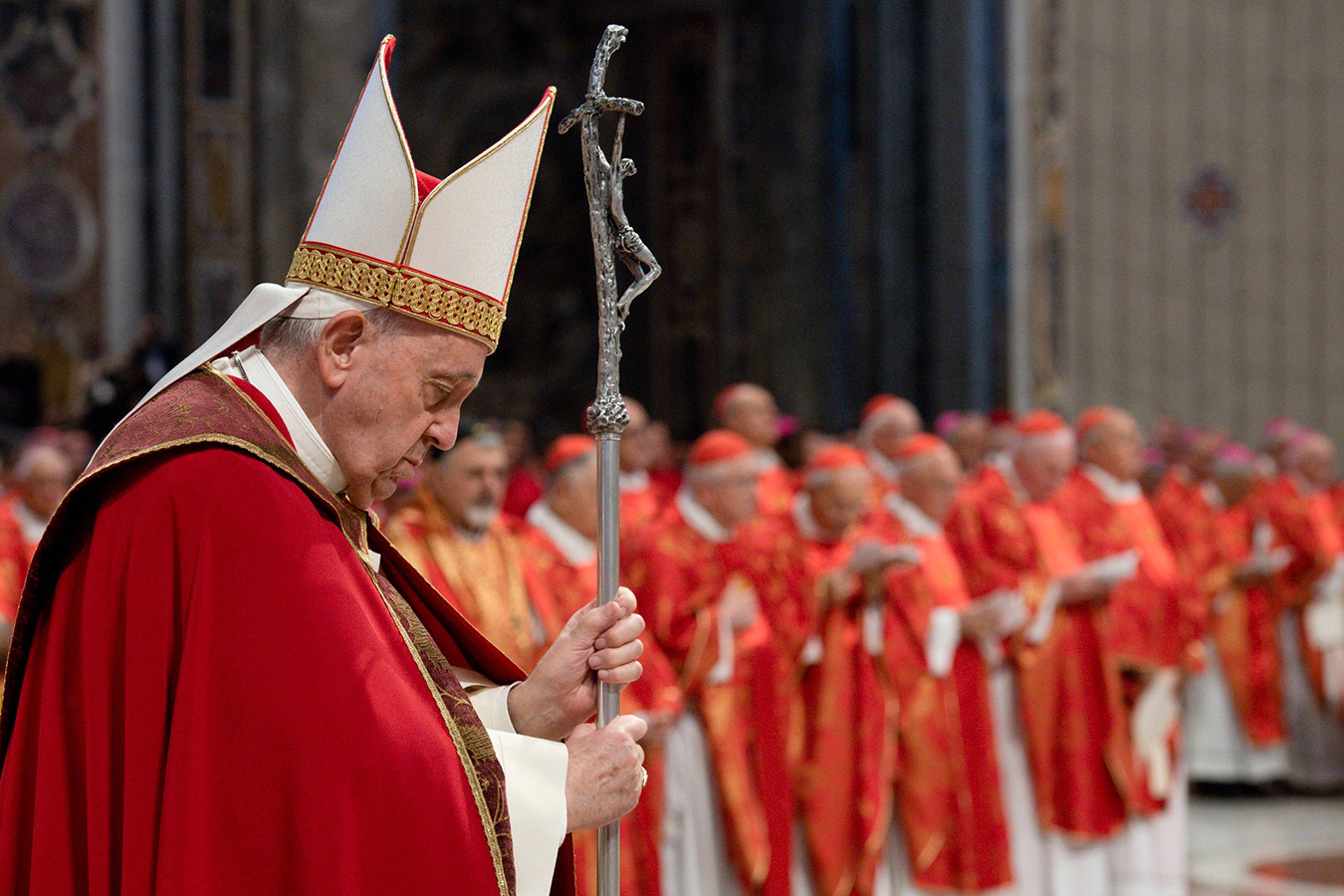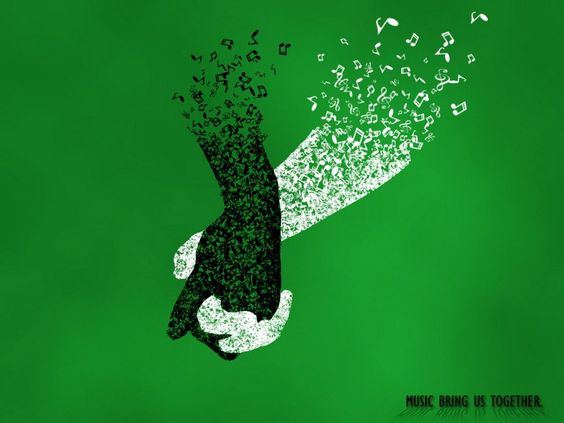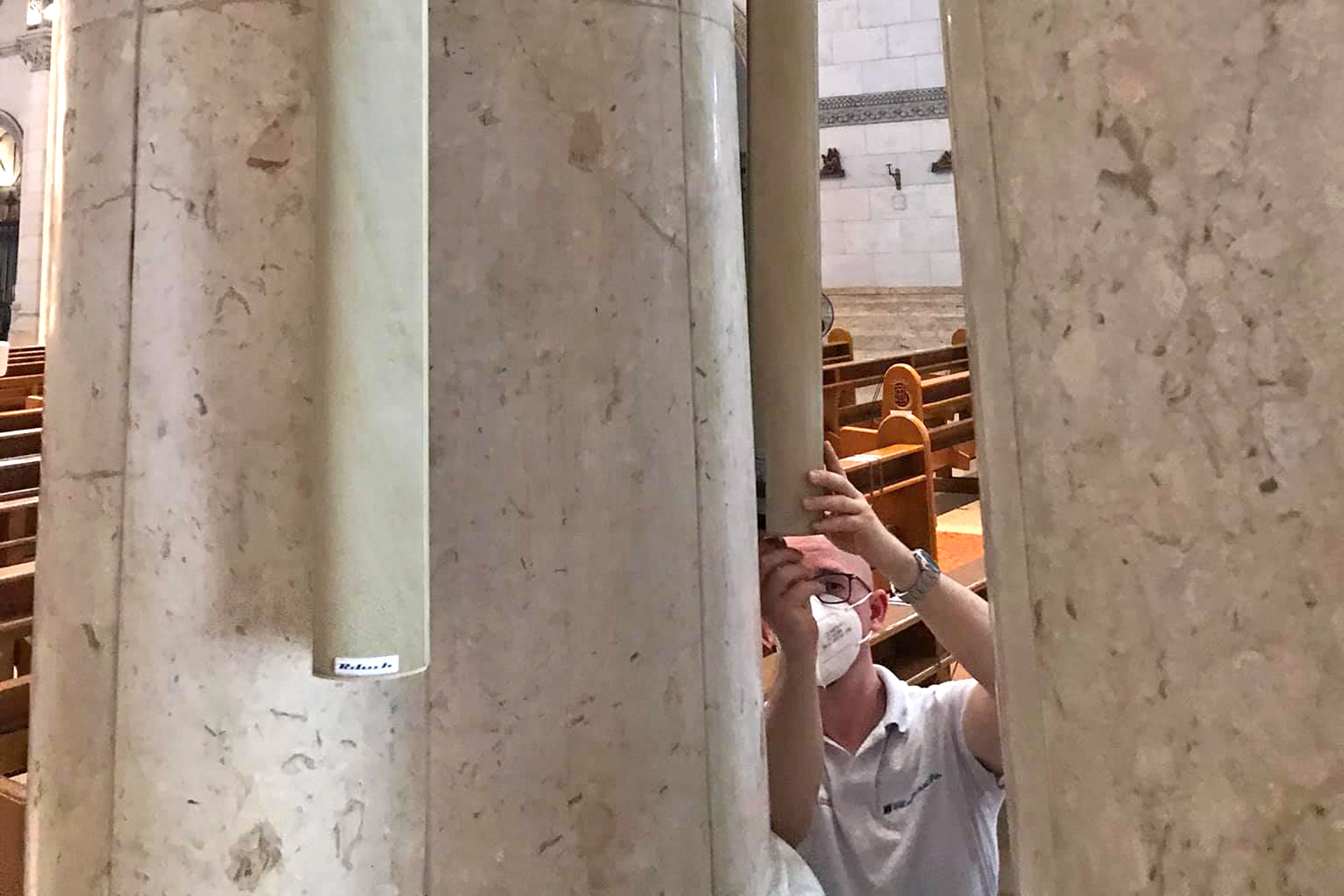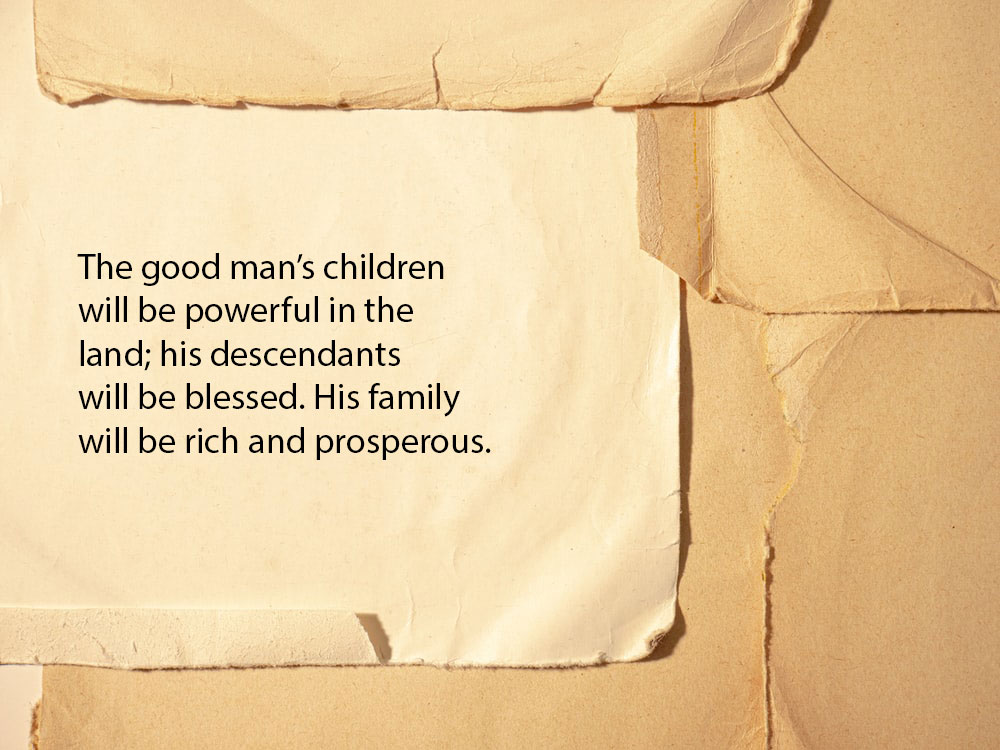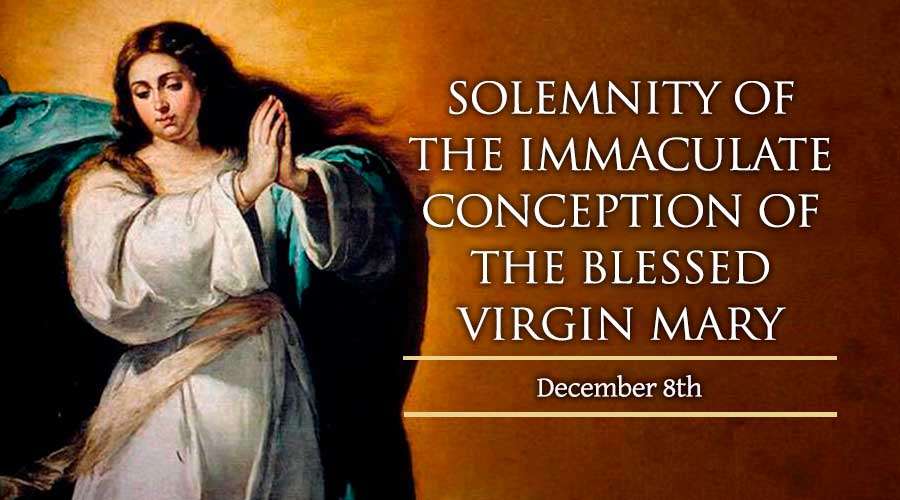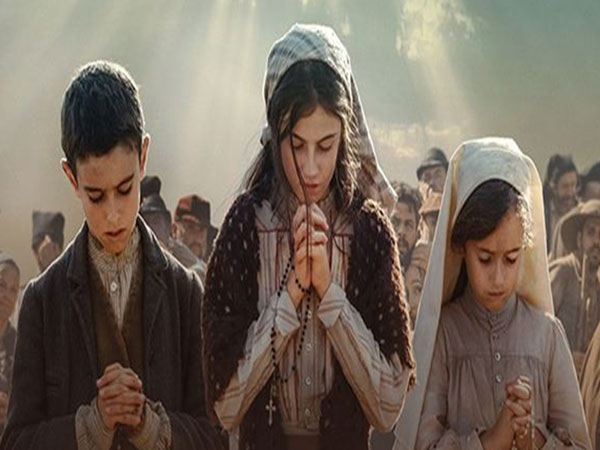BY SISTER JOAN L ROCCASALVO, CSJ
Christian discipleship is fundamentally a dynamic movement from self to the beauty of Christ. In the absence of this dynamic movement, faith remains woefully incomplete. …The essential characteristic of beauty then is to be transported from self to the thing of beauty … the ultimate transport being the beauty of Christ.

The Church’s “year of grace” is so-called because, over the course of a year and through her liturgy, the Church makes present the saving events of the Lord’s passion, death, and resurrection. Like most cultures, the Judeo-Christian is guided by cycles of time. Though distinct from civil time, sacred time is not separated from it, but affects and gives it meaning.1
The Church exhorts the faithful to make the year of grace their very own, so that their lives might be daily made new in Christ. Thus, the whole mystery of Christ unfolds from the expectation of his Advent to the days of Pentecost, and, finally, to the feast of Christ the King. Then the cycle begins again. As the liturgical year is repeated, it becomes the primary way through which the Catholic can make the day, the week, and the year a holy, beautiful, and meaningful experience.
Living the Church’s year of grace calls for an understanding, attitude, and devotion towards three things: the year, the week, and the day.2 The liturgical year is developed according to two cycles of the year: the temporal cycle and the sanctoral cycle. The temporal cycle includes: (1) the Advent-Christmas cycle, or, in the Byzantine rite, Philip’s Fast-Christmas, 3 and (2) the Easter cycle, Lent, Passion-tide, Easter and its extended celebration, Ascension, Pentecost, Sundays after Pentecost, and Christ the King. Following the calendar year, the sanctoral cycle celebrates feasts of the Mother of God and the saints.
Living the Liturgy
In early Christianity, it was a crime to attend the celebration of the Eucharist. Such activity rejected the pagan cult of the state, outlawed under pain of death. But the early Christians could not live without the Eucharist, giving meaning to their lives. They held fast to their weekly worship, meeting together, keeping vigil from Saturday night until Sunday morning, and celebrating the Eucharist.
In the Middle Ages, the Church’s liturgical life guided the lives of the faithful. Living the church’s year together united them in a spiritual bond. From Baptism to the Eucharist to the Last Anointing, from the Hours to processions and pious devotions, to blessings of crops, animals, and boats, the Church provided the liturgical and devotional framework that sacralized their lives. 4 The liturgical year “shaped their perception of the world, and their place in it,” and these “central moments gave Catholics the key to the meaning and purpose of their lives.” 5 In France, churches and cathedrals, dedicated to the Mother of God, were built in strategic locations to resemble the constellation, Virga, as a way of sacralizing the countryside. 6
The Parish Church in Nineteenth-Century America
With the arrival of European Catholics to the United States in the 19th century, Americans found refuge in their parish churches, becoming part of family life. Parish activities lightened the immigrants’ encounter with anti-Catholicism and cultural bias, comforted the faithful who lived and worked in deplorable conditions, and served as a magnet that drew families together for liturgical feasts. The beauty of these feasts lifted their spirits, otherwise marked by misery. Families, anticipating one feast after the other, lived with a liturgical frame of reference. Receiving the sacraments was a joyful occasion for the neighborhood, as were feast days of the Mother of God, St. Joseph, and the saints. In living the year of grace, their faith was handed down to the next generation as a living tradition.
The Parish Church Today
With the influx of new immigrants from other continents, the Church faces new challenges. The parish church today supports not just a program of religious education; the parish church itself has become the nerve center for the religious education of the family. In John Paul’s Apostolic Exhortation, “Catechesi Tradendae,” catechesis is intimately bound up with the whole of the Church’s life. Nothing in that life remains outside the Church’s catechesis—from sports to politics to social justice, from science to the arts to care of the environment. Moral questions about human sexuality, marriage and the family, call for special attention. The Church is committed to strengthening the family, especially where the culture opposes the standards of the faith. Where public morality has broken down, the parish assumes virtually all aspects of Christian formation. Comprehensive religious education begins with externals—from well-cared for churches, and attractively-arranged and informative bulletins, to caring how the sacraments are celebrated, and concern for children and the most vulnerable.
Challenges Facing Today’s Church
Today, Catholic faith in the western world is one of many options, including Catholics opting for a secular humanism. Moral erosion has eaten into the very fabric of living. A secularized and sexualized culture engulfs the family. Moral relativism has been elevated to a civil religion and a public philosophy. For many, life is no longer lived with reference to God, no longer viewed as central or essential to one’s life. With the Church’s high moral standards, and her teaching of objective truth, she irritates public officials. Moreover, the Church continues to be the target of governmental intrusion into her moral teaching. At the same time a democratic form of government should know how to reconcile cultural, ethnic, and religious pluralism without radical moral pluralism.
In his book, The Secular Age, Charles Taylor deals at length with these issues. 7 No society can long endure without the consensus of the majority of its citizens to some normative moral code. As societal forces virulently press for privatized religion, the public celebration of the liturgical year in the parish has assumed a new urgency. Parishes that promote a strong liturgical life serve as oases in the midst of a cultural desert, hostile not only to the Judeo-Christian moorings of western culture, but to virtue itself. The parish staff serves the parish faithful in the name of the Church. Accordingly, the pastor should arrange for periodic afternoons of recollection and prayer, and lectures on the theology of ministry, in order to strengthen his staff’s commitment to a strong parish life. 8
Living the Church Seasons: Advent-Christmas Cycle
The practice of Advent is today challenged everywhere. Except for Advent ceremonies and prayers at Sunday Mass, Advent is fast disappearing in practice.
Though linked to Christmas, the full celebration of Advent, as a distinct liturgical season, awaits a renaissance. Advent is not just an anticipation of the Lord’s Nativity; it is the time when the Church eagerly awaits with hope the coming of our Emmanuel, God-with-us. This is expressed in the prayer, “Maranatha, Come, Lord Jesus” (1Cor 16:22). During the Advent season, purple and rose vestments are worn, the latter on the Third Sunday, or Gaudete Sunday (“Rejoice”). The Christmas season has its proper liturgical place at midnight on Christmas Eve, rather than beginning on “black Friday” on the day after Thanksgiving, or before that. It officially ends on the feast of the Lord’s Baptism. However, the media would have us believe that the four weeks before Christmas constitute the holiday season. Then, with the arrival of Christmas Day, the holiday, in the secular mind, has been completed, except for post-Christmas sales that rush upon us. Consumerism can preoccupy families in the face of pre-Christmas sales. Such cultural dissonance jars Catholic parents, caught between the meaning of Advent and cultural pressure. Holiday shopping may run parallel to the Advent season, but there is little resemblance between the two. Unlike the rampant consumerism in evidence leading to Christmas, Advent nourishes the spirit, lifts it up, and prepares for the feast of the Nativity of the Lord.
Living the Church Seasons: Ash Wednesday and the Lenten-Easter Cycle
During the Lenten-Easter season, many Catholics attend daily Mass as the readings strengthen one’s resolve through the forty-day asceticism. The “Lenten Spring” begins with Ash Wednesday, the rite of receiving ashes. This annual ceremony sets the tone for the celebration of Lent, but differs dramatically from the fourth-century rite. In fact, it is a mere shadow of the original service. Then, Christian penitents who had committed grave, public sins, such as idolatry, murder, broadly understood, and adultery, were expelled from the Body of Christ. Before they could be reconciled with God and the Church, they had to do public penance. Although they were permitted to attend the Sunday Liturgy of the Word, these penitents could not remain for the Liturgy of the Eucharist or receive Communion. This painful deprivation was a stark reminder that public sinners had severed themselves from the Church.
In the Hebrew Scriptures, a public sinner wore sackcloth, a coarse, dark-colored material made from the hair of goats or the camel. Often, too, the penitent had his head covered with ashes. Jacob dressed in sackcloth at the report of the death of his son, Joseph (Gn 37:34). David also wore sackcloth during a period of mourning. The expression, “sackcloth and ashes” is found in Dt 9:3, Est 4:1, Is 58:5; Mt 11:21.
The Liturgy of Public Penance was divided into three parts. First, penitents presented themselves to their bishop, confessing their sins to him. After this, they were excommunicated. “This action was based on the viewpoint that the Church, taken in its fullest sense, is or should be a community of saints; whoever, by sin, has lost the life of grace no longer belongs to the Church in this full sense.” 9 The solemn ritual began with the individual wearing a penitential garb, and the bishop covering the penitent’s head with ashes. Accompanying the individual to the city’s gate, the bishop separated him from the community, who pledged their prayers for the penitent. This was a time to fast, to intensify one’s prayer, and to do good works. Second, at every episcopal service, a penitent received a special blessing from the bishop. Finally, the decisive act came at the end of the term of penance. In the liturgy of Reconciliation, the excommunication, accompanied by prayer and imposition of hands, was withdrawn. The bishop gave each penitent absolution from his sin. The penitent was again received into the Church, introduced again as a member of the Body of Christ. The bishop declared that the penitent could now be a full member of the Church.
Ashes are obtained from olive branches blessed on Palm Sunday in the previous year. Catholics voluntarily receive ashes, regardless of their rank or status. In the Latin Church, fasting on Ash Wednesday means a reduction of intake of food for those who are healthy; abstinence means not eating flesh meats. In the Christian East, Great Lent begins with a Black Fast on the Monday before Ash Wednesday. No meat or fish, nor egg products, may be eaten by the healthy.
The complete mandate for Catholics is to fast, to intensify one’s prayer, and to do good works. These three actions are inseparable, forming one act of worship to the Lord. In embracing penance together, we choose love instead of selfishness. Feeling pangs of hunger symbolizes hunger for God, our full and complete satisfaction. Fasting from a created reality frees us from that object. Moreover, saying no to food, or other created things, revitalizes the spirit. It brings with it self-mastery and interior freedom. To embrace Lenten asceticism, is to avoid those things which over stimulate the senses. We can fast from the world in many ways, from a favorite food, or from food altogether at certain times, from alcohol or sweets, or from various forms of entertainment. Praying the Psalms nurtures the poetic and contemplative life of the soul. The sacraments of Reconciliation and the Eucharist awaken, within the soul, new life in Christ.
In the Old Law, Jews were obligated to fast at certain times of the year to atone for sin. Muslims, who adapted Jewish practices, fast for twenty-nine daylight hours, abstaining from eating, drinking, smoking and sexual contact, during the month of Ramadan. The focus of Lent is to come close to Jesus by imitating him. Our fasting, doing works of mercy, and praying constitute one great act of worship.
In one of his Festal Letters (XIX, 9), St. Athanasius exhorts: “Anyone who neglects to observe the Forty Days Fast is not worthy to celebrate the Easter Festival.” For forty days in Lent, therefore, we fast, pray, and do good works to prepare for the renewal of our baptismal vows at Easter, when catechumens will be received into the Church.
The road from barrenness to God’s infinite mercy begins in earnest on Ash Wednesday. Barrenness, symbolized by the barren fig tree, is looked on as the worst of misfortunes. In the Garden of Eden, man, woman, and their progeny are called to bear abundant fruitfulness. The Christian scriptures are replete with images of this idea of fruitfulness. Symbolizing divine blessing, abundance, and well-being, the fig is one of the healthiest, most delicious of all fruits. The four evangelists record the parable of the barren fig tree. Sin veers its bad seeds in two basic ways: through excess or omission. Both trigger other bad seeds that prevent the good from growing. The Church names seven capital vices that poison the soul of its fruit: pride, avarice, envy, wrath, lust, gluttony, and sloth. Pride, the most basic and grave, and the ugliest of all, wields position and power. The ego usurps the place of God. In Dante’s Divine Comedy, the prideful penitents were forced to walk with stone slabs bearing down on their backs in order to induce feelings of humility (Purgatory, Circle 2). It is by the example of Jesus that the Christian must turn for mercy.
Music and the Arts Enhancing Liturgy
The ancients believed that the music one listened to influenced behavior and formed moral character. The “Hallelujah” chorus in George Friedrich Händel’s “Messiah,” exemplifies these thoughts. After Händel had finished composing the piece, he exclaimed with joy, “I did think I did see all Heaven before me, and the great God Himself.”
The text tells us what to believe. With a dramatic introduction, the full-throated chorus bursts forth with “hallelujah” (in Hebrew: hallel), the spontaneous and joyful praise of God to God. The text proper proclaims the reign of the omnipotent Lord God. The music itself bursts forth with vitality, telling us what to feel. The string section skips with joy while trumpets and thunderous timpani alert the soul: “Here is musical resurrection!” The music rouses the soul to feel—yes, feel—Christ’s Resurrection. Christian hope remains steadfast and strong, taking courage in Christ’s Resurrection, which has already been won for us. “Do not be afraid,” consoles the Risen Lord, “I am with you always, even to the end of time” (Jn 20:21; Mt 28:20).
Of all public church figures to comment on the state of church music, Benedict XVI, an astute musician, remains the most perceptive. He observes that liturgy is for all. The Catholic character does not mean uniformity, however. A Church which only turns to rather prosaic music has become ineffectual. Or as Pope Benedict remarked: “It is strange that the post-conciliar pluralism has created uniformity in one respect at least: it will not tolerate a high standard of expression.” 10
Early Christian art was preoccupied with communicating the paschal mystery. As perennial symbols, shortcuts for teaching the various aspects of the paschal mystery, they convey profound theological significance. Taken from the Greek sym and ballo, meaning “to throw together,” a symbol exists when something interior and spiritual is expressed in the external and material. Early Christian art depicts and emphasizes not suffering, but the glory of the Resurrection of the Lord, not as problems, but as the Christian response to suffering. The cross assumes special importance. Christians sign themselves not only to praise the Trinity and to reverence the cross, but also to symbolize the sacredness of their bodies as temples of God. The meaning of symbols is more important than the appearance or representation. The symbol veils more than it reveals. It is open-ended, less concerned with visual truth than with the meaning behind the visual. Early Christians drew symbols on the doorposts of their homes, on the walls of catacombs, and generally used them as a means of identifying themselves. The Christian understood the symbol; a pagan did not. Some of the earliest Christian art is found in the catacombs ofRome, a popular tourist and pilgrimage site. Here Christian symbolism converges beautifully with theology and the arts. They should be integrated into Catholic education at all levels.
Is beauty essential to Eucharistic worship? A resounding “yes!” is given, for the Eucharist is enacted in love, the crown of beauty, truth, and goodness. In the Eucharist, the sacramental signs and the sacred arts represent the primary way in which the mystery of the Incarnation continues to be effective in the Church. This mystery forms the basis of the Christian arts. They are the locus where the human, sensory, and visible realities meet the divine, spiritual, and the invisible. In them, materiality is united to spirit, and spirit, to materiality. The Incarnation introduces us to everything and provides us with everything. Because the sensuousness of beauty plays a critical role in the praise of God, the liturgy celebrates the senses. Christians see and hear, touch, taste, and smell beauty as Christ did. Because beauty is incarnate in matter, the senses conspire to mediate God’s presence in worship. The sacred arts exemplify the union of matter and spirit and best prepare the whole person for a divine, sacramental encounter. Convergence of love and beauty is the sole criterion for choosing all the particulars of worship from ritual, to sermon, to visuals, and to sacred music. Through them we “care enough” to give God “our very best,” to paraphrase the Hallmark Card’s dictum.
Quality has two meanings: (1) quality as the essential character of something: we value quality of life, quality time with family and friends, and quality of character; and (2) quality in man-made things, the condition for excellence: in the world of the arts, for example, perhaps no other word prompts more controversy than quality.
“Quality,” writes Barbara Tuchman, is the investment of the best skill and effort possible to produce the finest and most admirable result possible. Its presence or absence in some degree characterizes every man-made object, service, skilled or unskilled labor–laying bricks, painting a picture, ironing shirts, practicing medicine, shoemaking, scholarship, writing a book. You do it well or you do it half-well. Materials are sound and durable or they are sleazy; . . . . Quality is achieving or reaching for the highest standard as against the sloppy or fraudulent. It is honesty of purpose as against catering to cheap or sensational sentiment. It does not allow compromise with the second rate. . . . Quality can be attained without genius. 11
Beauty, “Ever Ancient, Ever New”
History has acknowledged the central role of the Church in the arts. For centuries, she has not only promoted beauty in literature, painting, sculpture, architecture, and music; she has stood as their foremost patron as well. In former years, she taught, celebrated, and inspired the arts. Church leaders recruited the finest artists to celebrate the faith in music, the visual and literary arts in the service of the liturgy. They understood that beauty is an essential and treasured aspect of faith, a most persuasive stepping stone to the contemplation of God. As the guardian and protector of truth and goodness, beauty belongs with her “two sisters”. 12
Despite the Church’s rich legacy, leadership in promoting beauty has declined. The document, The Way of Beauty, springs from the troubling realization that beauty is on the verge of being banished from Catholic theology. Not just minimized, trivialized, or ignored, beauty is also being dismissed as critical to liturgical celebration, for it is seen as ornamental, or even elitist. These sentiments are summed up by von Balthasar whose theological aesthetics permeate the 2006 document:
Our situation today shows that beauty demands for itself at least as much courage and decision as do truth and goodness, and she (beauty) will not allow herself to be separated from her two sisters. . . We can be sure that whoever sneers at her name as if she were the ornament of a bourgeois past—whether he admits it or not—can no longer pray and soon will no longer be able to love. 13
In the proceedings of the 2006 Pontifical Council for Culture, beauty in all of creation is discussed, in the arts, both secular and sacred. All these aspects point to, and culminate in, the beauty of Christ, and beauty in the liturgy.
Common sense tells us that beauty is not synonymous with a pretty face, or a finely-tuned body. Popular culture would have us equate human beauty with physical appeal. Beauty resides below the surface of things, and cannot be applied externally, like a new hairdo, a new suit of clothes, new paint on a wall, or icing on a cake. External beauty is a fraud unless it is completed by truth and goodness. Beauty is not aestheticism, not a perfect performance. St. Thomas Aquinas gives us a terse definition: beauty is that which pleases the eye. 14 Beauty is anything that pleases, delights, and gives deep satisfaction by the knowledge if it. The mind is pleased and delighted through the senses. It is transported in a dynamic movement beyond the self to the thing of beauty. Things are not beautiful because they delight us; we enjoy things because they are beautiful.
Christian discipleship is fundamentally a dynamic movement from self to the beauty of Christ. An exceedingly attractive man, Jesus answers the Psalmist’s description as “the fairest of the sons of men; graces is poured out upon {his} lips” (Ps 45:2a). Were not the disciples first transported by what they heard, and touched, that is, by everything that Christ manifested in his very person?
In the absence of this dynamic movement, faith remains woefully incomplete. Without beauty’s dynamic movement toward Christ, faith remains a bundle of truths that are formalistic, dry, and without spiritual unction. Nor is faith simply a matter of performing good deeds. Without beauty’s dynamic movement toward Christ, one questions why such charitable works should be done. In fact, their intent may be so utilitarian, so grafted to the subjective, natural plane that there is no transcendent overreach. The essential characteristic of beauty then is to be transported from self to the thing of beauty, and that ultimate transport is to the beauty of Christ.
Beautiful sacred signs can exercise a powerful influence in bring back inactive Catholics to the Church; while ugliness can drive them away.
In the eighth century, St. John Damascene challenged Christians: “If a pagan comes and asks you to show him the faith, take him to the Church and let him see the sacred icons.” 15
Damascene’s challenge may be rephrased: Assuming that we pray as we believe, and we believe as we pray (lex orandi, lex credendi), can a Catholic take a non-Catholic to church, showing him or her its sacred signs, its art, architecture, and music, and confidently proclaim: “See, this is our faith”?
- In some European countries, the feasts of Epiphany on January 6th and Corpus Christi are not only religious feast days but also civil holidays. Thus the rhythm of liturgical time and of civil time is lived within two concentric circles. ↩
- Sacrosanctum concilium, Constitution on the Sacred Liturgy, §102-11. Hereafter SC. ↩
- The Philip’s Fast in preparation for Christmas begins between November 10th – 14th. During this fast, it is the custom to observe a strict fast on Monday, Tuesday, and Friday and a lesser fast on Tuesday and Thursday. ↩
- Eamon Duffy, The Stripping of the Altars, second edition (New Haven, CT: Yale University Press), Part I:A.1. Seasons and Signs: the Liturgical Year, 11-46. ↩
- Ibid., 11. ↩
- The French cities that formed the constellation of Virga are: Amiens, Evreux, Rouen, Bayeux, Spica, Chartres, Paris, Reims. DVD: “Chartres Cathedral: A Sacred Geometry” (Golden Age Productions, 2000). Available from www.janson.com. ↩
- Charles Taylor, A Secular Age (Cambridge : Harvard University Press, 2007) 874. ↩
- The following documents are suggested for such religious activities. Vatican II, Decree on the Apostolate of Lay People (Apostolicam Actuositatem), John Paul II, The Lay Members of Christ’s Faithful People (Christifideles Laici) 1-3. ↩
- Joseph A. Jungmann, S.J., The Early Liturgy, translated by Francis A. Brunner, CSsR (Notre Dame University Press, 1959) 242-43. ↩
- Joseph Ratzinger, The Feast of Faith, translated by Graham Harrison (San Francisco: Ignatius Press, 1986) 101, 122-23, 124. ↩
- Barbara Tuchman, “The Decline of Quality,” (New York Times Magazine, Nov. 2, 1980), accessed online. ↩
- Hans Urs von Balthasar: The Glory of the Lord, Seven Volumes, Volume I: Seeing the Form, translated by Erasmo Leiva-Merikakis and edited by Joseph Fessio, S.J. (San Francisco: Ignatius Press {1961} 1989) 18. ↩
- Ibid. ↩
- St. Thomas Aquinas, Summa Theologiae I.5.4. ↩
- St. John Damascene, Treatise on Images against Constantine Caballinus;PG 95-309. ↩
About Sister Joan L Roccasalvo, CSJ
Sr. Joan L. Roccasalvo, CSJ (Brentwood, NY), holds degrees in philosophy (PhL), musicology (PhD), theology (MA), and liturgical studies (PhD). She has taught at all levels of Catholic education, and writes a weekly column, “The Way of Beauty,” for the Catholic News Agency. Sister published for HPR in 2008 and 2009.
Post Credit: Homiletic and Pastoral Review




